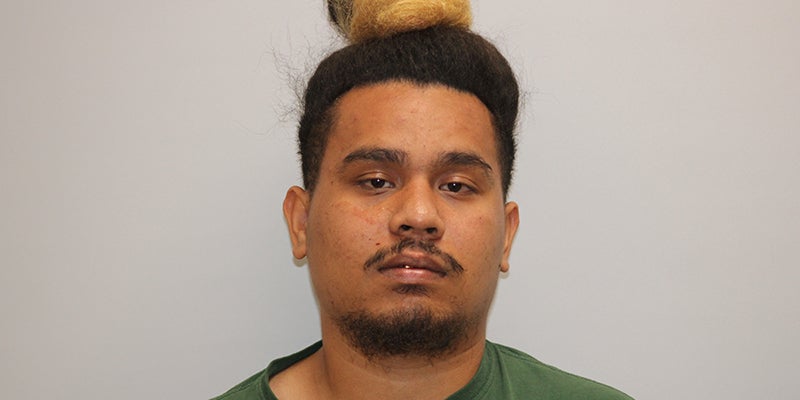U’s academic work with China chilled by federal concerns
Published 7:05 am Saturday, February 1, 2020
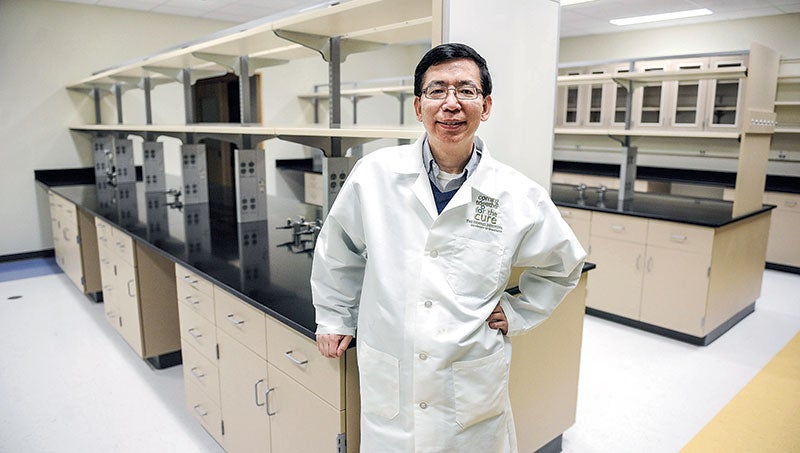
- Dr. Zigang Dong. Herald file photo
EDITOR’S NOTE: This was the second of a two-story series by the StarTribune entitled “Betting on China,” which looked at the connection between the University of Minnesota and China.
Visit the StarTribune to read both stories of BETTING ON CHINA.
• CONCERNS: Federal government looking at the possible stealing of cutting edge science.
• AUSTIN CONNECTIONS: Former executive director of The Hormel Institute, Dr. Zigang Dong leaves Institute amid federal investigation
By Mila Koumpilova
Star Tribune, distributed by Tribune Content Agency, LLC.
The solar-powered air purification tower rises 200 feet out of a cluster of high-rises in China — a soaring symbol of new possibilities for its inventor, University of Minnesota engineering professor David Pui.
Pui hopes the technology will save some of the millions of lives claimed by air pollution each year. And with a new university startup company and interest from Chinese real estate developers, he sees a chance to bring the university a higher profile.
Collaboration with China has long been a linchpin of U research, and lately that work has accelerated. In the past five years, university faculty have published more than 4,300 scientific papers jointly with colleagues in China — more than any other country.
Meanwhile, the university is exploring new ways to market its inventions in China and doing research sponsored by Chinese companies, according to information that the Star Tribune received through a public records request.
But federal concerns that China is trying to steal cutting-edge science from U.S. campuses are forcing the U to take a hard look at those ties. Late last year, Dr. Zigang Dong, a well-known cancer researcher and former head of the U’s Hormel Institute in Austin, abruptly left the university. His departure came amid a federal investigation into possible failure to disclose foreign support for his work in grant applications.
Also last year, the university joined other institutions in cutting ties with Chinese telecommunications giant Huawei over national security concerns. The firm had contributed more than $1 million in gifts in exchange for sneak-peeks at U computer science research.
Still, U leaders say their main concern is a chill on fruitful partnerships.
“We’ve entered this tricky area that has some xenophobia to it,” said Vice President for Research Chris Cramer. “Chinese researchers feel they are under a cloud of suspicion just because they are Chinese.”
But officials also acknowledge a need for more vigilance. The U’s internal auditor will review how the university ensures compliance with federal rules related to foreign scholars.
For academics, such vigilance is an uncomfortable departure from a largely unquestioning embrace of global collaboration, said Daniel Golden, author of “Spy Schools,” a book about efforts by foreign powers such as China to exploit campus vulnerabilities. Recent years have brought both examples of Chinese researchers wrongfully accused of spying — and of important technology spirited away from U.S. campuses to China.
“If the U.S. government is overreacting, it’s partly compensating for universities putting their heads in the sand,” he said.
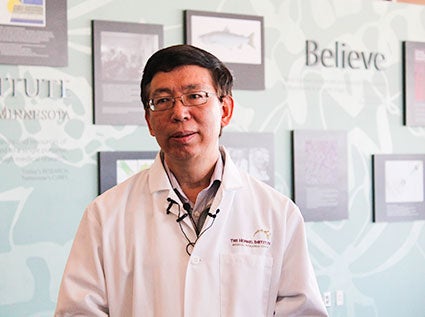
Dr. Zigang Dong. Herald file photo
Room for growth
Pui, who grew up in Hong Kong and earned three degrees from the U, exemplifies the global reach of today’s scientific inquiry.
With 300 scientific papers and 40 patents to his name, he is a university institution who is a member of the elite U.S. National Academy of Engineering. He is also an Einstein Professor, the Chinese Academy of Sciences’ highest recognition. Doctoral students and post-docs from around the world work in his Particle Technology Lab on the Twin Cities campus. Twenty international companies, including three in China, support his Center for Filtration Research.
Pui developed the technology for giant towers that filter harmful particles from the air in 2015 with a Chinese doctoral student. Colleagues at the Chinese Academy of Sciences and Xi’an Jiaotong University, where Pui was an honorary professor, reached out to the local and regional governments for backing to build a pilot tower. With filter parts made by Minnesota-based 3M and Donaldson Co., the tower was complete within a year.
A second-generation tower that also addresses carbon dioxide pollution later rose in an industrial park in Jiangsu Province.
“My interest is to see that these towers are built so they can benefit mankind,” Pui said.
The university’s long-standing partnership with China has powered discoveries and created opportunities for students. More than 230 Chinese faculty and staff work at the U. A growing number of visiting professors and researchers from China — as many as 500 in some recent years — have arrived on campus. U faculty published 845 scientific papers with colleagues at Chinese universities in 2018 alone. That number rose steadily even as a standoff over trade and other issues deepened between the United States and China.
Zan Gao, a U kinesiology professor who studies how emerging technologies promote health, said the benefits of such teamwork are undeniable. Partner researchers at a hospital in southern China were able to recruit hundreds of breast cancer survivors for a joint study on the benefits of sports watches — something that would have been challenging in the much less populous United States.
The university also has looked to China for financial support for its research and for marketing opportunities. Entities in China have paid U faculty to design an app to gauge Chinese commuters’ happiness and track their behavior, to investigate the early diagnosis of ovarian cancer and to look for ways to protect endangered tigers. As recently as this past spring, a company called Hangzhou Zhongmei Huadong Pharmaceuticals paid the U more than $818,000 to develop a new type of drug tablet, with the U standing to receive royalties on the sales of products stemming from its research.
Since 2012, the university’s College of Veterinary Medicine has hosted a swine conference in China, a major event that has promoted faculty and student exchanges and research partnerships. It’s also helped to market U-developed vaccines and therapies for African swine fever, which has devastated Chinese pork producers. In its third year in China, a U medical devices conference held last month in Shanghai drew more than 1,000 physicians, manufacturers, researchers and others.
The university also pursued a joint medical devices center with the city of Beijing and its elite Tsinghua University, with documents showing plans to recruit U faculty to teach there, offer corporate trainings and solicit financial support from the Chinese government. That effort fizzled — perhaps a casualty of its outsized ambition, said Arthur Erdman, who heads the U’s Earl E. Bakken Medical Devices Center. But more recently, the U signed a new deal with Tsinghua to market medical devices invented at the center through Tsinghua’s campus technology incubator.
Erdman said his center has presented 280 patentable inventions to the U in its first 11 years. But many inventions are languishing. Chinese companies could give them a shot at commercial use, he said: “It does mankind and womankind little good for innovations to sit on the shelf.”
At the university’s urging earlier this year, Pui teamed up with three other current or former U faculty members to launch a startup to explore opportunities to sell his towers in China. The fledgling company got a Chinese patent for the technology. Pui and his partners are pitching it to real estate developers intrigued by the effects of cleaner air on home prices and to other companies.
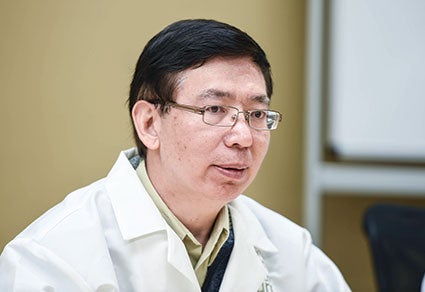
Dr. Zigang Dong. Herald file photo
Federal scrutiny
In May, Cramer’s office received a troubling e-mail about Dong, the prominent cancer researcher who had led the Hormel Institute for 17 years: An official at the National Institutes of Health, which supplies more than a third of the U’s federal grants, said Dong had apparently failed to disclose foreign affiliations and research support in two 2014 grant applications and other paperwork. The agency called on the university to investigate.
The agency had sent a flurry of such letters to universities, which led to the departures of four Chinese-American scientists from Houston-based MD Anderson Cancer Center and two faculty members at Emory University. The NIH stressed that not all scientists under review are of Chinese ethnicity, but it also notes that the Thousand Talents program — a Chinese government initiative to recruit its nationals working abroad — is a “known prominent player.”
The agency said it has received tips from the FBI, whose director, Christopher Wray, has charged on Capitol Hill and on campuses across the country that China is trying to “steal its way up the economic ladder at our expense.” Earlier this week, the FBI arrested Charles Lieber, the chair of Harvard University’s chemistry department, alleging he lied about his work for a Chinese university, as well as two Boston-area researchers who authorities say tried to steal scientific research on China’s behalf.
FBI officials visited the U twice last academic year.
Some prominent Chinese-American researchers have said the NIH inquiries and other scrutiny have painted them with a broad brush based on their nationality and threatened their careers.
In many ways, Dong had made no secret of his deep ties in his country of birth. He published extensively with colleagues there and helped organize an annual cancer research symposium in China. In 2012, the U hosted Sen. Amy Klobuchar, then-Gov. Mark Dayton and a visiting Chinese delegation at an event announcing a partnership with Henan Cancer Hospital in Zhengzhou that would lead to the launch of the Chinese government-backed China-U.S. (Henan) Hormel Cancer Institute, with Dong playing a key role. A U news release once quoted him saying that “collaboration is key to making progress in the fight against cancer.”
According to documents the U provided, which were redacted to protect Dong’s identity, Cramer responded to the NIH in August. He acknowledged that Dong should have included more information in his grant applications, including a foreign research grant and overseas affiliations. Dong had told U officials that he was in an advisory role in those positions, with limited formal obligations and no direct compensation. Participation in one program did provide $175,000 in supplemental funding, Cramer wrote, but the U did not know Dong had been involved.
Cramer assured the agency that the university had counseled Dong about the disclosure issues and he was doing a better job. The e-mail from the NIH came three days later: The U’s response did not cut it. The agency called on the U to produce additional documents.
In November, Cramer wrote to the NIH to say Dong had resigned after accepting a job elsewhere, which likely meant the university would not be able to provide those documents. Cramer suggested that the departure was related to a recent demotion because of dissatisfaction with his leadership at the Hormel Institute — not to the federal investigation. University officials had announced in May that Dong would step down as Hormel Institute director to focus on opening a dermatology clinic at the institute. They told Dong’s colleagues of his departure the day before the first NIH e-mail arrived.
The Star Tribune was unable to reach Dong.
In November, Hormel employees received a note about his resignation that said he had accepted a position as dean of a major medical college in China. It stressed that Hormel lab supplies and equipment “should not be taken for any reason.” Later, Cramer sent a curt notice to Henan Cancer Hospital, where the China-U.S. (Henan) Hormel Cancer Institute is based, to say the university was pulling out of a partnership agreement in light of Dong’s departure.
U officials say they know little about the work of that institute, where Dong has been listed as director. They balked at discussing the outcomes of a study that Dong led with $100,000 from China-based Zhejiang Ausun Pharmaceuticals, based on a two-page 2014 contract.
The NIH said all its foreign disclosure investigations are ongoing.
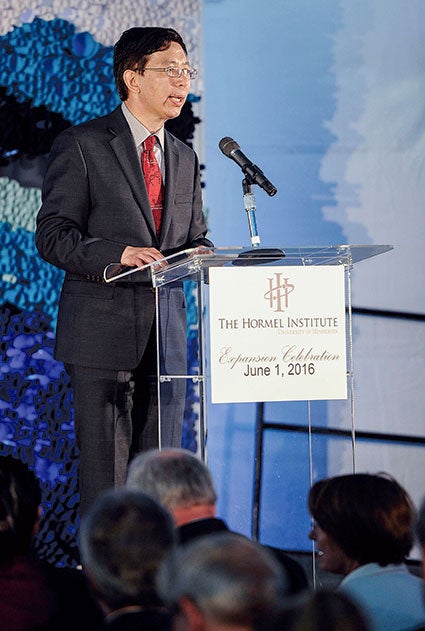
The Hormel Institute’s Dr. Zigang Dong welcomed people to the celebration and grand opening for the new expansion in 2016. Herald file photo
Weighing risks
U officials downplay the federal concerns, even pointing to a 1981 letter that then-U President C. Peter Magrath wrote to the State Department rebuffing a call to restrict the activities of a visiting Chinese computer science scholar. Cramer said that while there are well-documented cases nationally of campus discoveries inappropriately ending up in China, what he has seen are largely honest disclosure mistakes. He noted that China has significantly stepped up its investment in research and development in recent years, so “it’s a little rich to say they must be doing so well because they are stealing our stuff.”
Joseph Konstan, associate dean for research of the College of Science and Engineering, said the scrutiny is having a chilling effect on global collaborations, as faculty of Chinese descent fear those partnerships will cost them future federal grants. That climate, along with new visa restrictions for some Chinese students, is driving down graduate applications from China.
“If it harms U.S. science to prevent some U.S. science from being stolen, at the end of the day are we better or worse off?” he said.
University leaders recently wrote to the U.S. Department of Education to oppose a planned expansion of requirements to report foreign gifts and contracts. They wrote that the requirements are confusing and burdensome, and would discourage gifts by banning anonymous contributions.
But U officials also say the U is taking steps to better safeguard its intellectual property. As an example, former President Eric Kaler pointed to last year’s decision to stop accepting gifts from Huawei, which has pleaded not guilty to federal charges of trade secret theft, bank fraud and violation of trade sanctions. That decision came under federal pressure and trailed similar moves by most of the U’s Big Ten peers.
The company was making gifts to support university research in cloud-based routing and other areas, asking for annual progress reports. It had also signed on to support a campus center for research on digital storage, thereby getting a crack at a confidential review of emerging science and the option to delay the publication of findings.
Konstan said such provisions are standard practice, though the scale of Huawei’s donations was “a little unusual.” Still, he decried the loss of funding for computer science faculty.
Meanwhile, talks with Tsinghua University about commercializing medical devices invented at the U have stalled. Erdman said the ball is in Tsinghua’s court after that university reduced a much longer list of innovations that it was considering down to just one.
“My particular view of China is I am very cautious,” he said. “Intellectual property is certainly a big concern.”
Pui and his startup are still working to gain traction in China. Charles Lo, a U researcher who previously served as a China point person for Shoreview-based instrument maker TSI, said there are steep hurdles. Each tower costs more than $1 million to build, and Chinese companies are reluctant to take a chance on such emerging technology. The startup has at least temporarily shifted its focus to India, where it has been called upon to build a demonstration tower after a court mandated air pollution reduction in Delhi.
Still, Pui, who served as director of the U’s China Center in the ‘90s, said engagement in China remains important for the university.
“The academic bridge is much more solid than politics and business bridges,” he said. “We need to continue to enhance it in good times and bad.”
This story was produced with support from the Education Writers Association Reporting Fellowship program.


